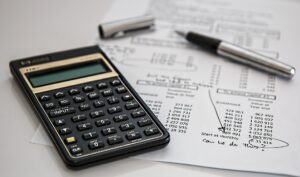One of the most complex and highly accurate tasks from the person in charge of the accounting position is the making of the balance balance table. This is an issue that has a very important effect in managing the business in terms of assets and asset structure that the business currently has. So let’s find out the issues related to the Balance List and draw on the experience of assessing the financial situation of the business as well as what businesses are facing right under the following article!
Easy-to-understand concept of balance balance balance
A general financial statement devoted to reflecting the overall situation and business activities as well as the level of capital use, the prospects of the business at a certain time are correctly called by the name: Balance list
From there, we can clearly see that the Balance Report seems to be an overall picture to help us better understand the financial resources of the business.
What is the purpose of the balance balance?
The purpose of the balance list has been mentioned somewhat in the concept, which is the general financial statements, reflecting the overall indicators of the situation of assets and capital sources forming assets. These indicators will be classified and sorted into each item, each type as well as each specific and encrypted target to be the most convenient for checking, reconciliation and processing on the computer. From there, it also reflects the number by the beginning of the year, the number at the end of the period.
Analysis of financial balance tables by assets and capital sources
1. Assets listed on the Financial Balance List
- Economically, it will help to show the value of assets according to the existing structure at the enterprise up to the time of making reports such as goods, currencies, fixed assets, materials and financial investments or in the form of remable debt at all stages or different steps in the production and business process.
- Legally: The metrics of the indicators will reflect all existing assets under the management and use rights of the business.
2. Capital sources are recorded on the Balance Balance List
- Economically, it will show the financial size, content and financial situation of the existing business.
- Legally, it is intended to show the legal responsibility of the enterprise for the number of assets under management and use for the State, investors, shareholders, superiors, joint venture capital, with banks or credit institutions, with customers, other economic units and with employees …
From there, it can be seen that in addition to the target column, we will also have columns reflecting codes, column numbers at the end of the period and column of numbers at the beginning of the period as well as the justifying column.
Mastering the principles of balancing balance
1. Provisions in Accounting Standards “Presentation of Financial Statements”
When making an Balance List, the programmer and presenter must comply not only correctly but also fully with the general principles related to financial statements. In addition, the Assets and Liabilities items listed on the Balance List need to be presented separately into short and long term, depending on the duration of the normal business cycle of the enterprise. Specifically, the problem is wrong:
– Normal business cycle within 1 year (12 months): Assets and Liabilities will be classified into short-term and long-term on the principle of:
+ Short-term type will include recovery and payment within no more than 12 months from the time of reporting
+ Long-term type will be recovered and paid from December or more from the time of reporting
– Assets and Liabilities shall be classified into short-term and long-term for enterprises with normal business cycles longer than 12 months will satisfy the following conditions:
+ Short-term type will include recovery or payment within a normal business cycle
+ Long-term type includes those related to recovery or payment for a period longer than a normal business cycle
– For businesses that are inactive or for some reason based on the business cycle to differentiate between short and long term, accounts and liability will be presented according to the decreasing liquidity.
2. For subordinate units and subordinates without legal status
In this case, the balance list must be carried out by the superiors to exclude all balances of items in which the item arises from internal transactions, for example: payables, remberances, internal loans … between superiors and subordinate units, subordinate units.
3. Indicators without figures as exempt from presentation on the Balance List
The balance lister in this case will have to fight back the ordinal numbers of the indicators that follow the continuous principle in each previously prescribed section.
From the above article, it can be seen that the balance list plays a very important role for each business, because it helps the executive or anyone in the business to assess the financial situation of the business. Not only that, businesses will be able to see the level of capital use, the situation or the results of production and business activities or financial economic prospects, as well as the decrease of the equity of the enterprise. Hopefully, the information through this article will understand some part of the Balance List.






